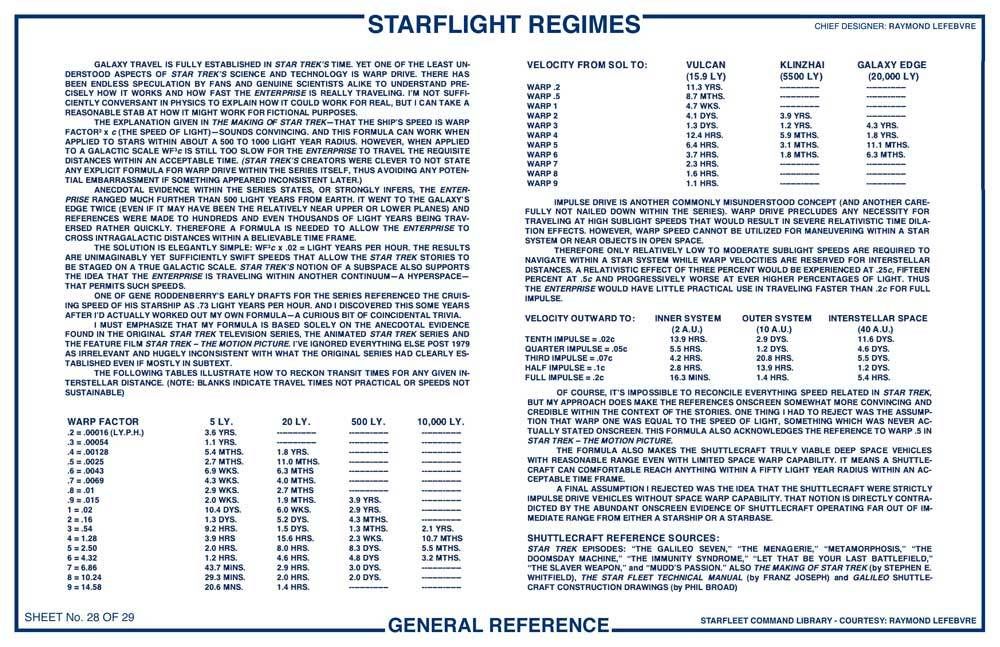Well, shit. I asked you how much FJ's warp scale factored into your essay and not how much you think the writers of modern Trek were lazy and didn't care. The FACT is that even GR himself, would forsake science for storytelling. How about all those shots of the 1701 whizzing by with a mighty "whoooosh??"
How about all those times the ship shakes from a "near miss??"
C'mon already.
You're a smart guy. You're better than this constant petty bullshit you peddle.
Your previous post came across as a shot at me for expressing my perspective.
On point, I acknowledge that GR told the TNG writers they were not bound by TOS if they so wished. Sometimes they did and sometimes they didn't.
But it doesn't matter whatever was said by whomever because all we
really have is the evidence onscreen. Whatever someone may claim, even GR, is irrelevant unless it's consistent with the evidence onscreen.
I am not peddling bullshit. I'm putting forth a perspective, one that while you don't like it. That's fine, but it doesn't make it bullshit.
Movies and TV ideas are remade all the time and they often aren't connected to previous works except in name only. My perspective is
Star Trek is no different. The idea has been reinterpreted numerous times on film and TV and even the writers themselves have acknowledged that ultimately it's up to the individual viewer to decide what they do and do not accept.
Where is it written that I am bound to subscribe to something that I judge to be wrong or in error? No where. I'm free to accept only that which I assess to be fitting and consistent just as anyone else is free to accept the whole package as a whole if that works for them. If I read Batman there's no law that says I have to subscribe to all the Batman titles. I'm free to read only
Detective if that's what works for me.
Well
this doesn't work for me and I'm free to share it with like minded people if they so wish to discuss it.
I am pretty sure that everyone on the internet as aware of your signature.

Perhaps not.
I wasn't trying to be a smartass. I simply meant to indicate how I approached this issue because it becomes a migraine trying to reconcile TOS warp issues with latter Trek's take on it.
The TNG era warpscale was intended to be different.
The FJ tech manual explained the TOS warp scale in a very believable way, even though the series never quite followed it. It was cool that ENT chose to embrace this, though it seems like all the series threw all the science out the window to serve the needs of the story.
How much did the FJ warp scale factor into your research?
I didn't really consider the FJ scale. As much as I've admired FJ's work he unfortunately made too many mistakes that were inconsistent with what was established onscreen. The fact that ENT apparently followed his approach doesn't make it work any better because it still ignores the weight of evidence already established by TOS. One could say, though, that while ENT's scale was off that the ships may have been sufficiently slower in actual terms to be reasonably credible.
Yes, the TNG scale was meant to be different, but that doesn't really come across onscreen. And like TOS before the TNG writers never really addressed specifics, but rather it was more by indirect means.
And so we're left with what is actually onscreen. There's too much anecdotal evidence in TOS to just dismiss it out of hand. And TOS did come first and laid the ground work. To make TNG consistent with TOS an explanation is needed that makes some sense OR you're stuck with accepting that TNG is a variation on the
Star Trek concept that is set apart and not consistent enough with TOS to be credible.
It's not credible either to say everything in TOS is wrong because that ignores everything laid out onscreen.





